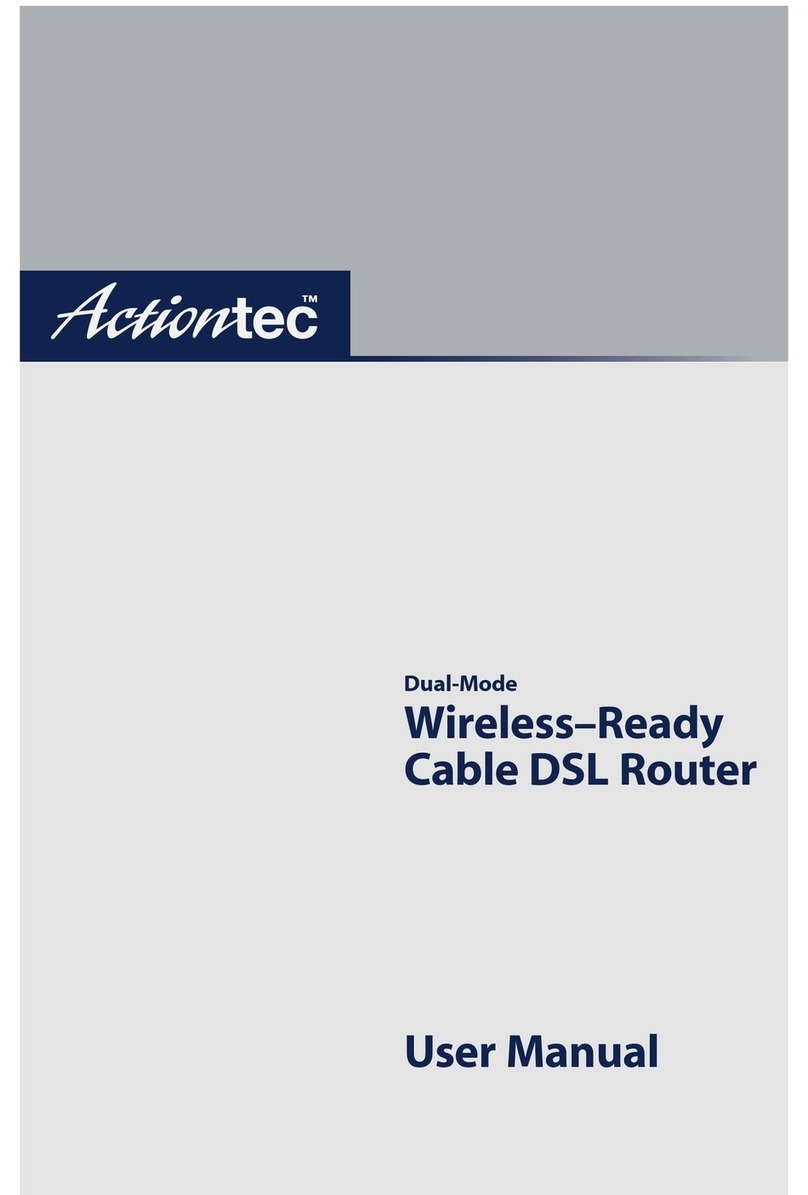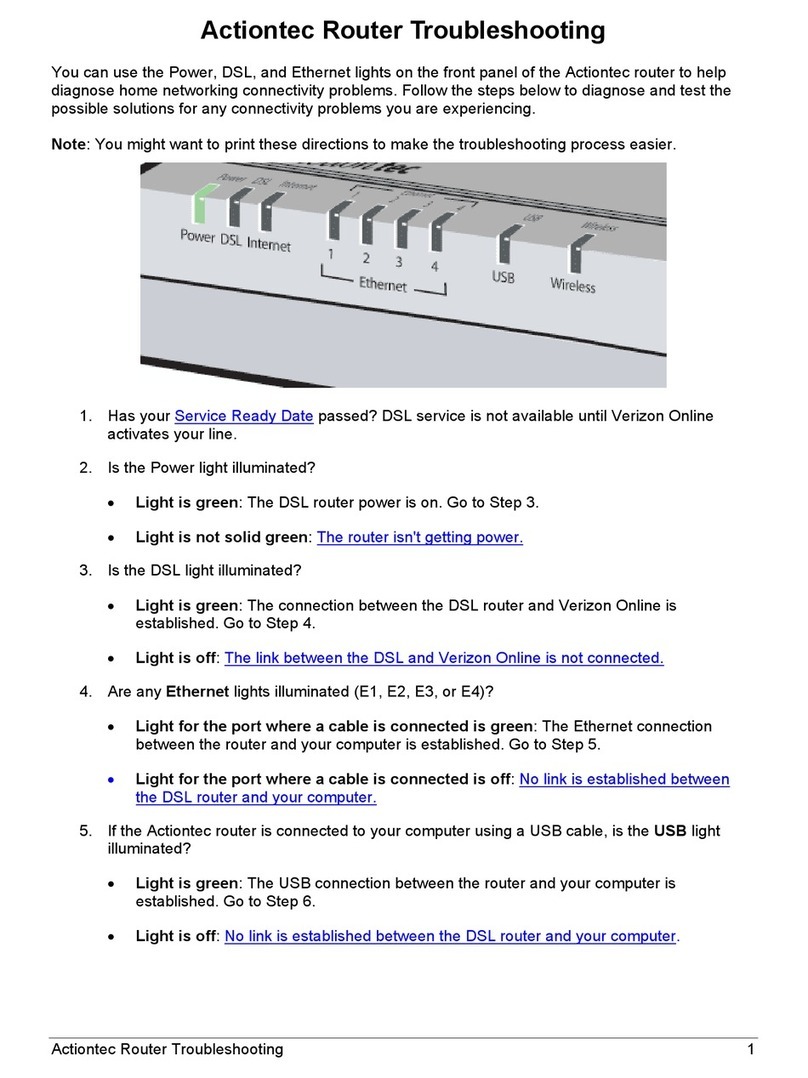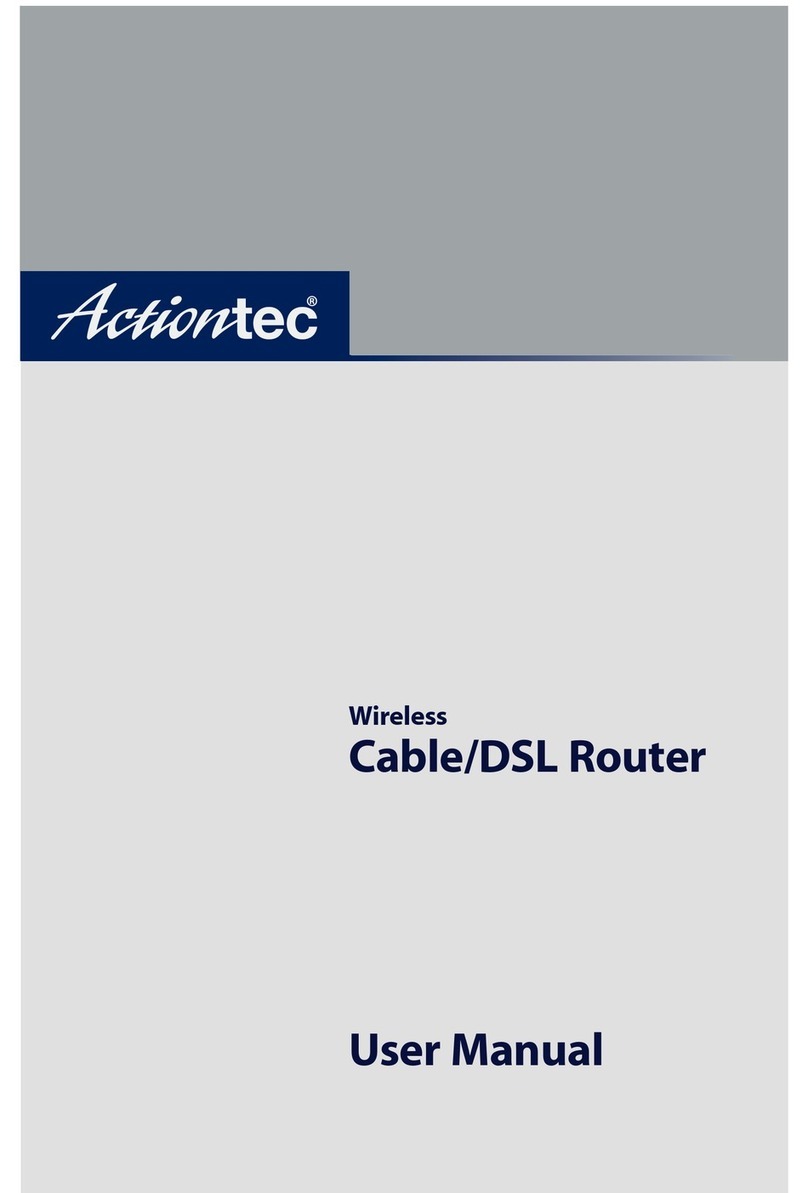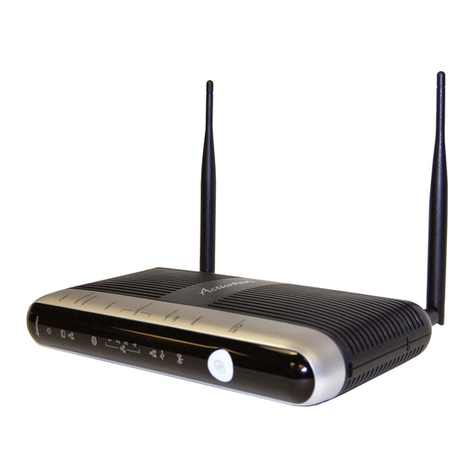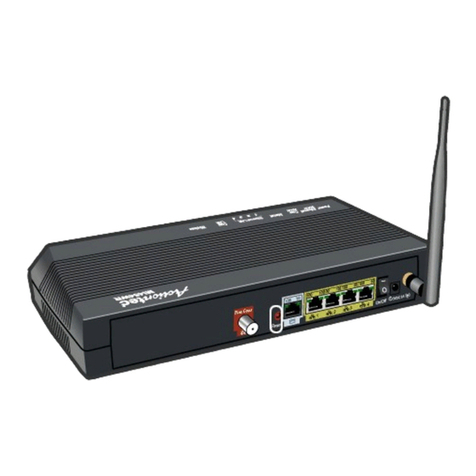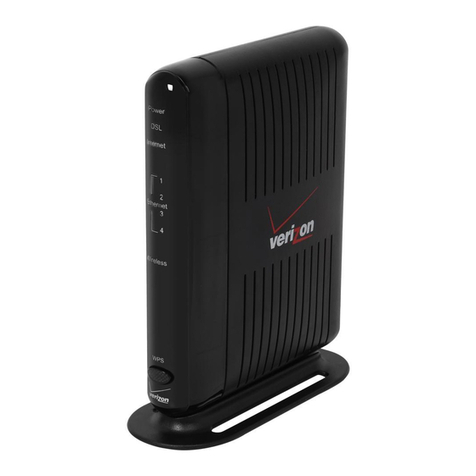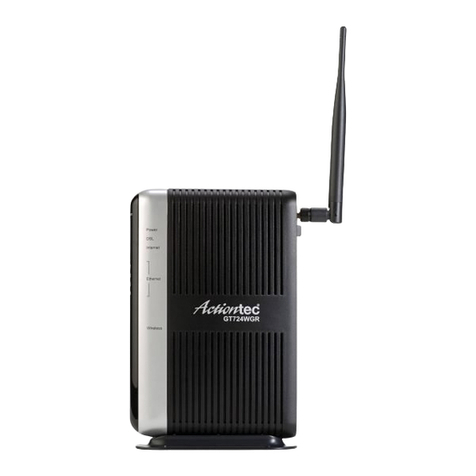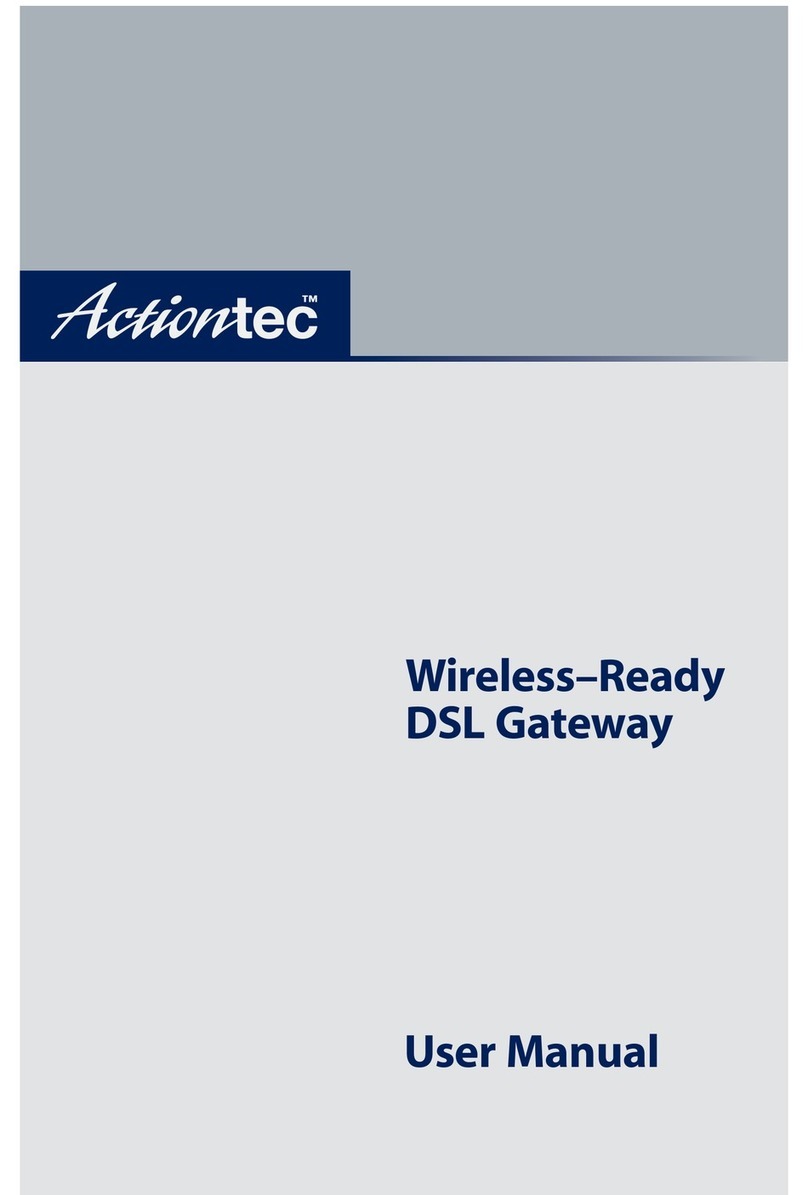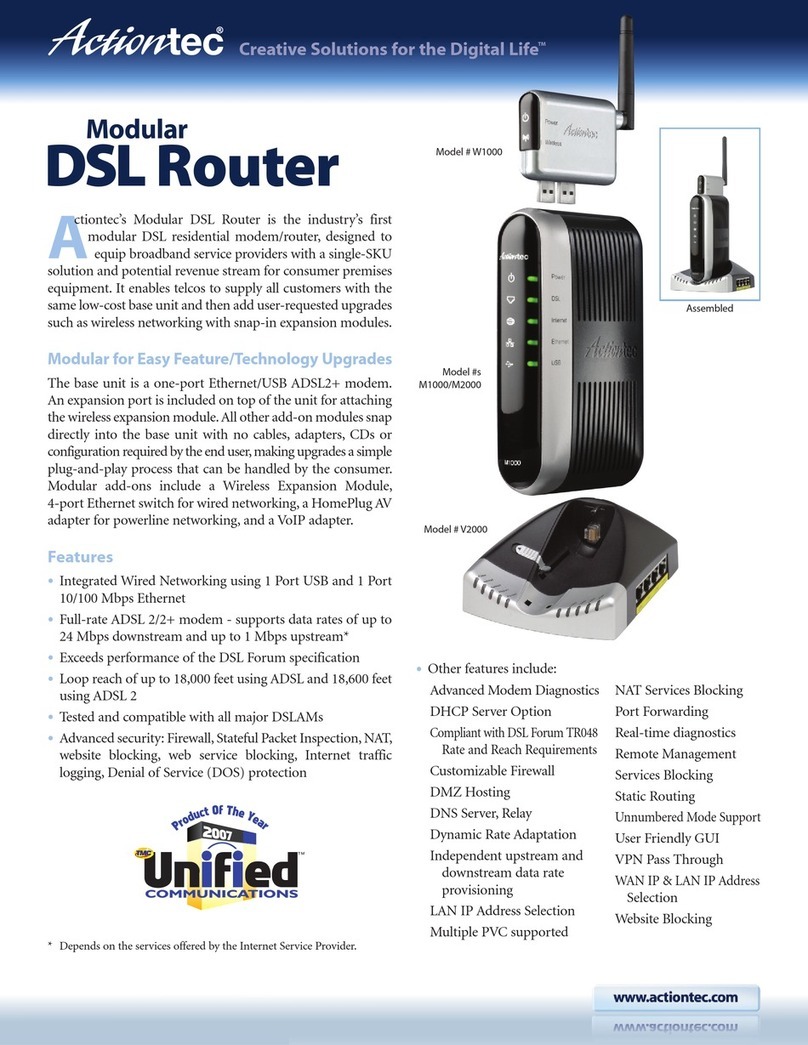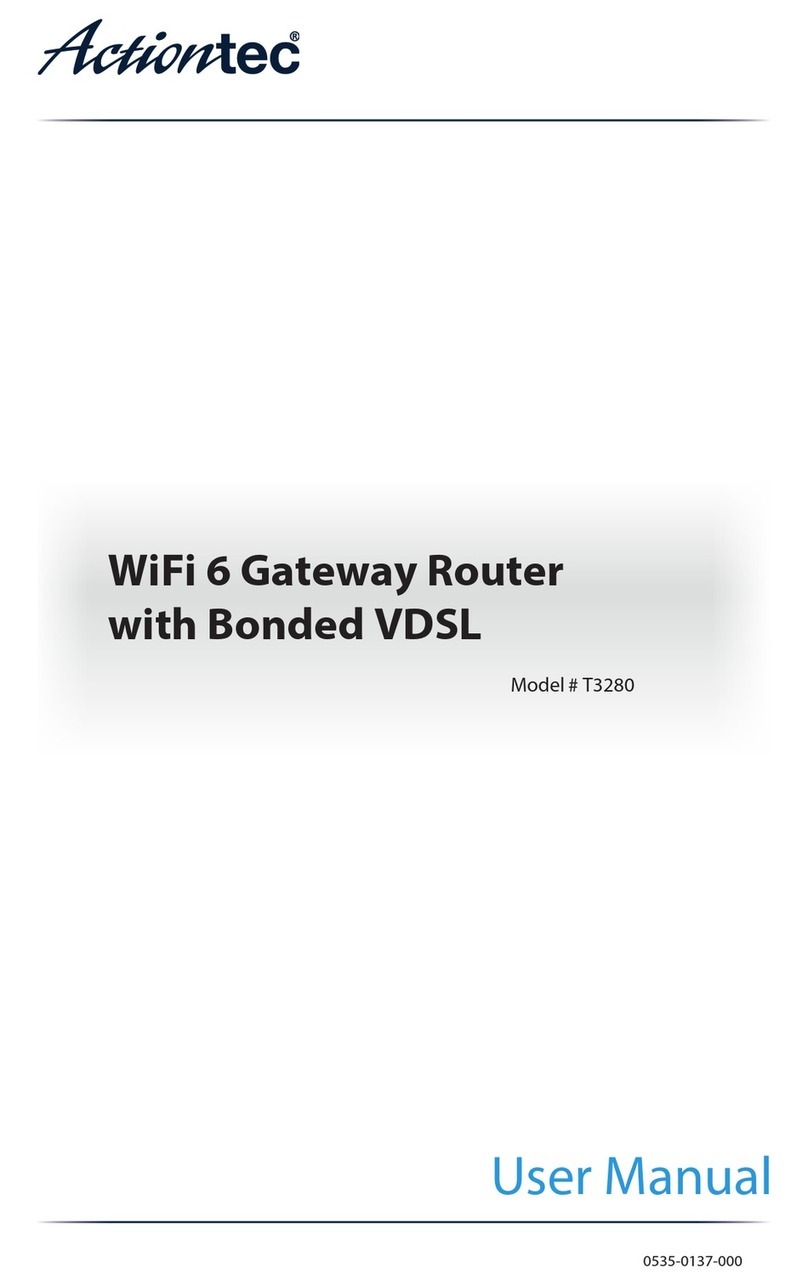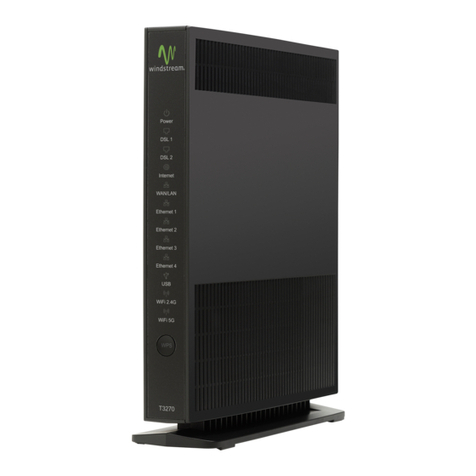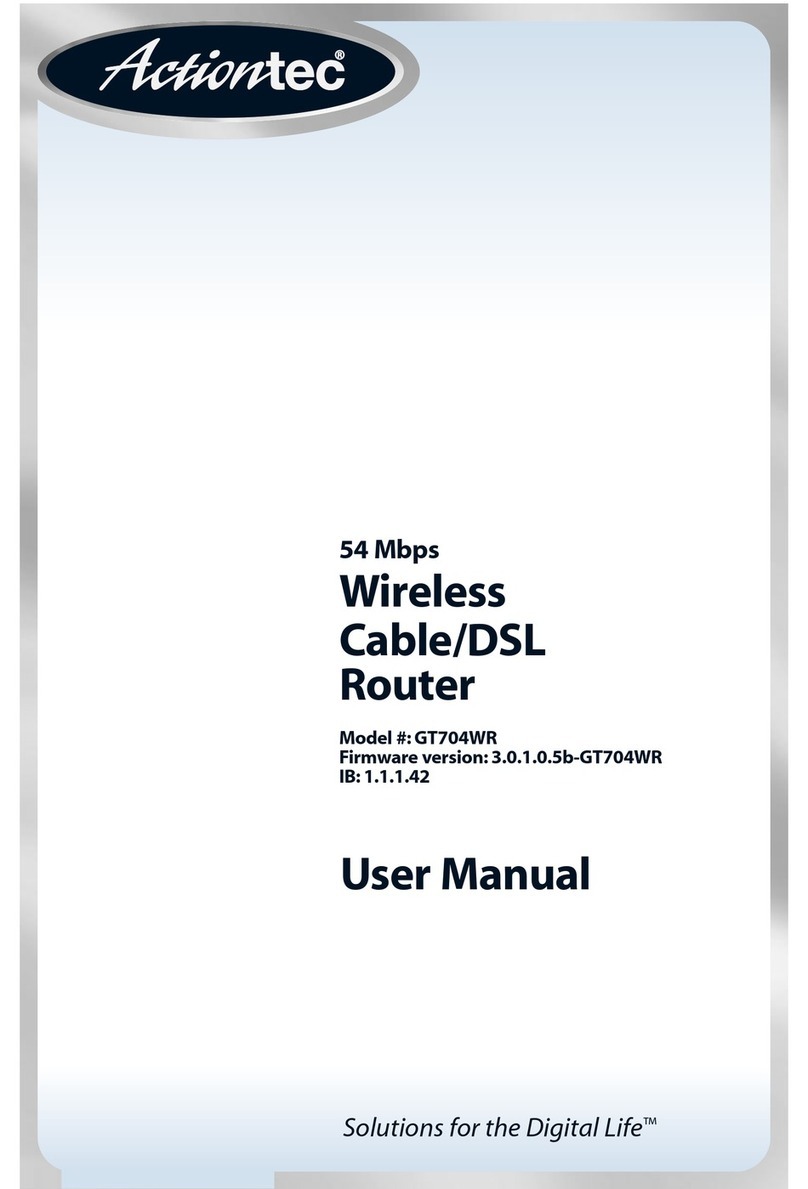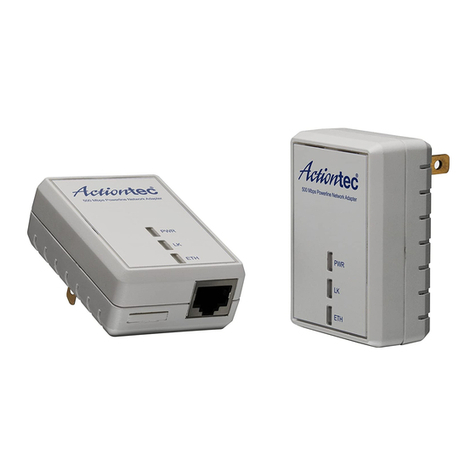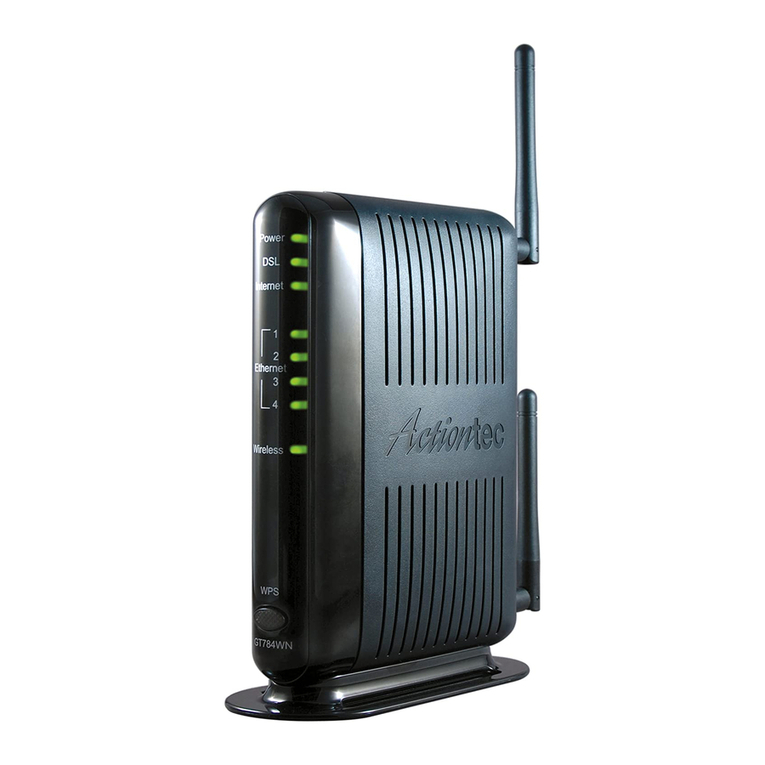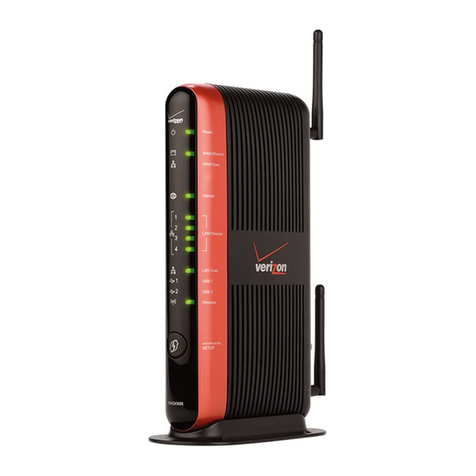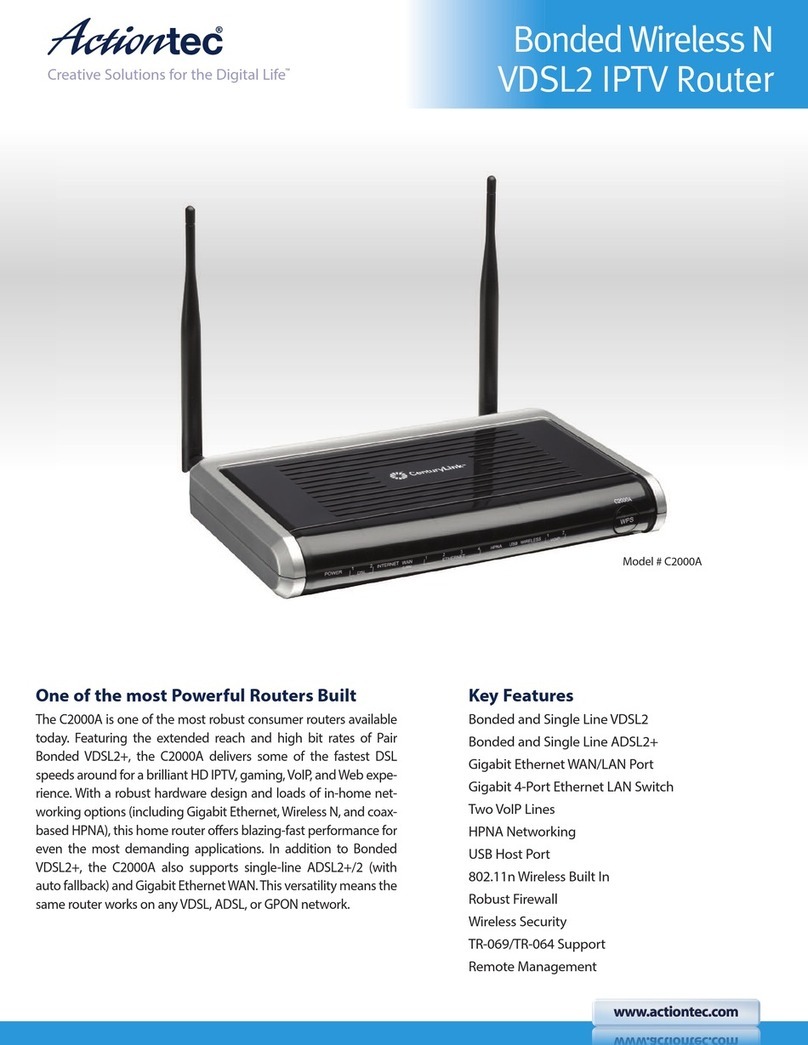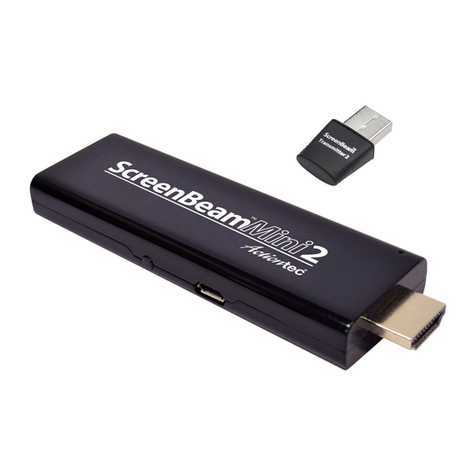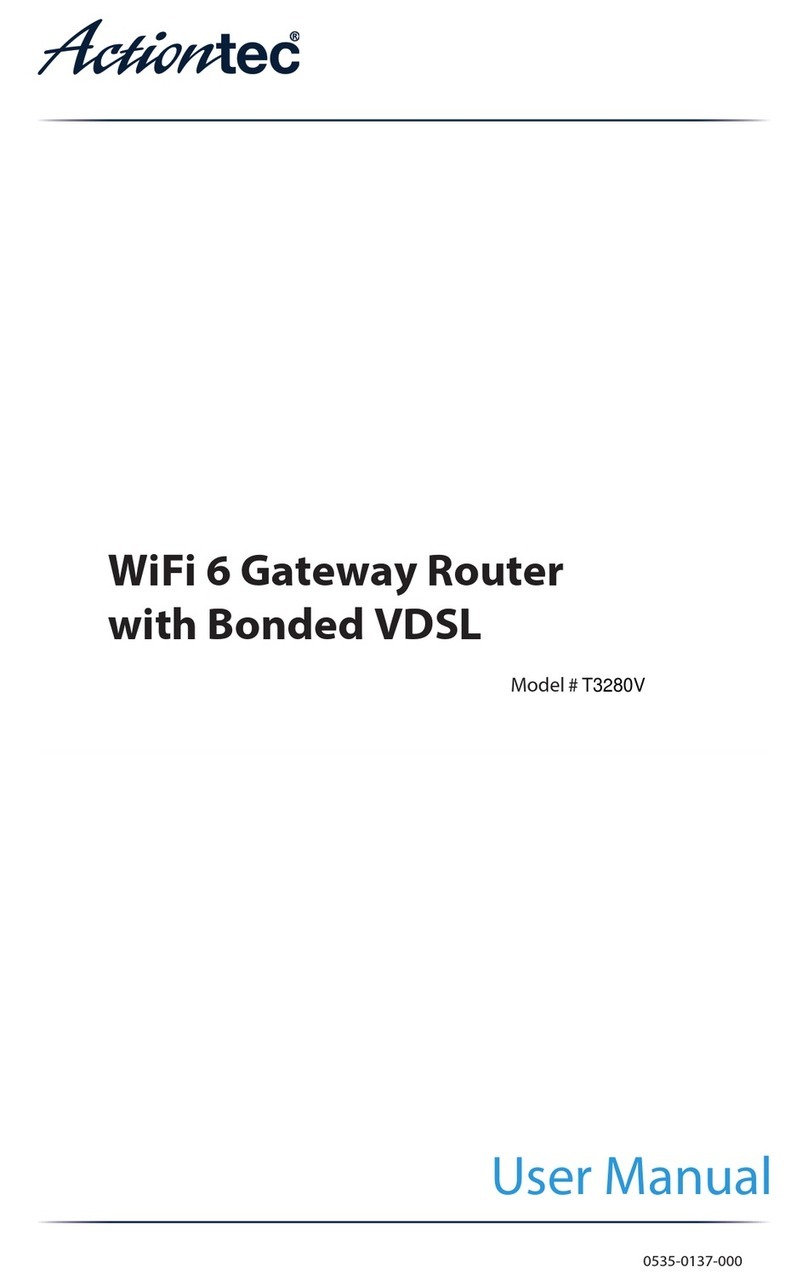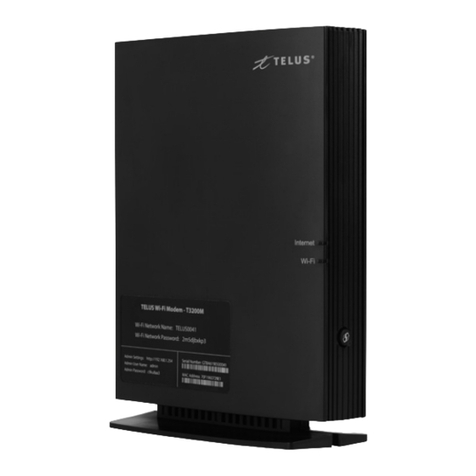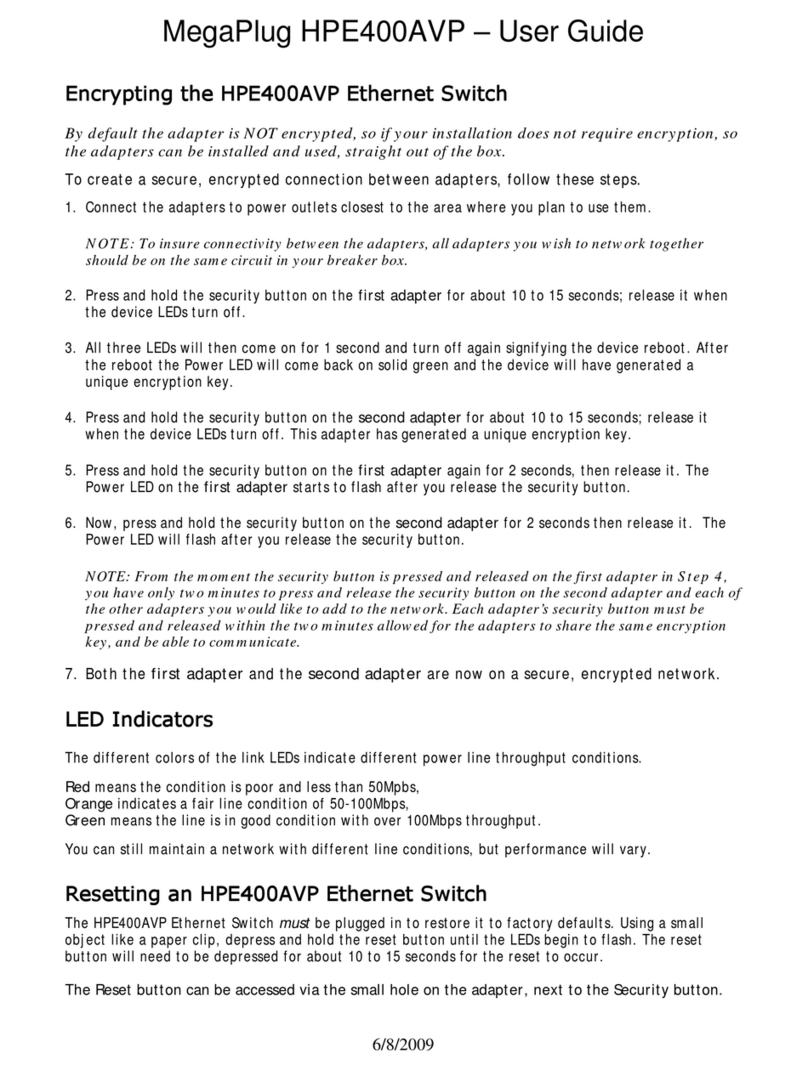
Creative Solutions for the Digital Life™
Modular DSL Router
Technical Specifications
Descriptions
•ITU G.992.1 (G.dmt), G.992.2 (G.Lite), G.994.1
(G.hs), G.992.3 (G.dmt.bis), G.992.4
(G.lite.bis), G.992.5 (ADSL2plus)
•ANSI T1.413 Issue2
•ATM User-Network Interface, Version 3.1,
Section 3.
- The full VPI range (0 – 4095) and VCI range
(1 – 65535) are supported.
- Adaptation Layers AAL5, AAL2 and AAL0
are supported.
- The traffic shaping function supports traffic
classes CBR, VBR (real time and non-real
time) and UBR (with PCR limiting).
•ITU-T Recommendation I.610 B-ISDN
Operation and Maintenance Principles and
Operations.
- F5 segment and end-to-end loopback cells
•
IEEE 802.11g
•
IEEE 802.11b
•
IEEE 802.1x
•
WPA/WPA2
•
WEP 64/128 bit encryption
•
SSID Broadcast enable/disable
•WPS
•WMM
•Multi SSID (4)
•Auto Channel Selection
•2 FXS ports for phone/fax connection
•Modular/Stand-alone mode for Home/
On-the-Road use
•Remote XML auto configuration
•Remote auto firmware upgrade
•Echo cancellation for clear calls
•Major Codecs (G.711a/u-law, G.729A, G.729AB,
G.726, G.723.1)
•Caller-ID Type I/Type II
•Call hold, call waiting, call forwarding, call
transfer, 3-way conference
•SIP/RTP packet TOS tagging
•ISO/IEC 8802-3; ANSI/IEEE standard
802.3 part 3.
- IEEE 802.3x – Full Duplex capable
- IEEE 802.3u – Auto negotiation
•RFC 1213 "Management Information Base for
Network management of TCP/IP-based internet:
MIB-II".
•D-I-X, "The Ethernet - A Local Area Network:
Data Link Layer and Physical Layer Specifications".
•
Transparent MAC level bridge for Ethernet-like devices
in conformance with the IEEE802.1d specification.
•ISO/IEC 10038:1993 (E), Std 802.1D.
•
RFC1213 "Management Information Base for Network
Management of TCP/IP-based internet: MIB-II".
•
RFC1493 “Definitions of Managed Objects for Bridges”.
•RFC 791 “Internet Protocol”.
•RFC 950“Internet Standard Subnetting Procedure”.
•RFC 1122 “Requirements for Internet hosts
– communication layers”.
•RFC 1191 “Path MTU discovery”.
•RFC 1213 “Management Information Base for
Network Management of TCP/IP-based Internet”.
•RFC 894 “Standard for the transmission of IP
datagrams over Ethernet networks”.
•RFC 826 “Ethernet Address Resolution Protocol:
Or converting network protocol addresses to 48.bit
Ethernet address for transmission on Ethernet hardware”.
•RFC 792 “Internet Control Message Protocol”.
•RFC 768 “User Datagram Protocol”.
•RFC 793 “Transmission Control Protocol”.
•Support Static Route
•Support unnumbered mode
•RFC 1058 “Routing Information Protocol”.
•RFC 1723 “RIP Version 2 - Carrying Additional
Information”.
•RFC 2453 “RIP Version 2”.
•RFC 1812 “Requirements for IP Version 4 Routers”.
•RFC 1191 “Path MTU discovery”.
•
RFC 2131 “Dynamic Host Configuration Protocol”.
•RFC 2132 “DHCP Options and BOOTP Vendor
Extensions”.
•RFC 2131 “Dynamic Host Configuration
Protocol”.
•RFC 2132 “DHCP Options and BOOTP Vendor
Extensions”.
•The DHCP client supports the following
minimal subset of options described in RFC2132:
- Requested IP Address (requested by default;
is mandatory)
-Parameter Request list (subnet-mask only)
-IP Address Lease time (dhcp-lease-time)
-Client-identifier (dhcp-client-identifier)
-Default route (routers)
-DNS Proxy Server
Features
ADSL
ATM
OAM
Wireless
Module
VoIP Module
Ethernet
Bridge
IP
ARP
ICMP
UDP
TCP
IP Router
RIP
DHCP Server
DHCP Client
